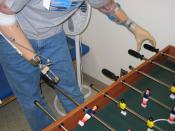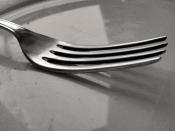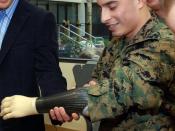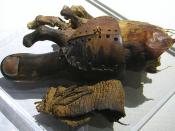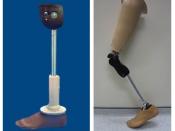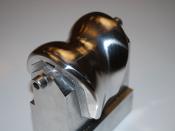What are artificial body parts? Doctors and bioengineers, scientists who know both the human body and how to build machines, have together created some sixty artificial body parts. In the future, they hope to make artificial organs, called organoids, to replace diseased lungs, livers, and other organs.
Now⦠on to my topic Tadah! Artificial LIMBS! Definition: ÷ Synthetic replacement for an arm or leg lost as the result of injury, disease, or a birth defect ÷ Also called prosthesis (Wow, so chim) ÷ Cannot perform all the functions of a human limb ÷ But⦠a well-fitted prosthesis can help a person participate in most everyday activities Preparation: ÷ An individual prosthesis must be custom-made for each patient ÷ In most cases involving an amputated limb, the remaining stump must heal and shrink before it can be fitted with a permanent prosthesis ÷ For several weeks, the stump is wrapped tightly with elastic bandages to help it shrink to a firm, smooth surface.
During this time, the person exercises the remaining limb muscles to preserve their strength and movement, and to promote circulation.
÷ Plastic socket that will fit over the stump snugly and comfortably is made ÷ A cast for the socket may be obtained by wrapping the stump with bandages soaked in wet plaster and letting them harden ÷ After the bandages are removed, they serve as a mould. Liquid plaster poured into this mould provides a model of the stump, which is used to make the socket. A socket can also be made by moulding softened plastic directly onto the stump, which is protected by thin layers of cloth and rubber.
÷ Next, artificial arm or leg is attached to the socket ÷ Materials used in making artificial limbs include plastic, fibreglass, metal, and wood.
÷ Light metal supports attached to the socket may contain an artificial joint to replace an elbow or a knee ÷ The prosthesis ends in a substitute hand or foot. Some hand substitutes look like a real hand, but most consist of a pair of metal hooks that act as tongs. A foot substitute has the same general shape as a normal foot. Most prostheses are attached to the body by means of straps or suction.
Hmm⦠How do u control these limbs? ÷ Controlled by an attached stainless steel cable that loops around the opposite shoulder ÷ Movements of that shoulder produce movement in the corresponding arm prosthesis. Artificial legs are chiefly controlled by the body's normal movements while walking ÷ In the early 1960's, researchers developed a type of prosthesis controlled by myoelectricity--the electric current produced when a muscle contracts ÷ Metal discs inside the socket touch the tissue of the stump. The discs pick up myoelectric impulses, which are then amplified and used to control an electric motor in the prosthesis ÷ In most myoelectric arms, impulses from one muscle bend the arm and those from another muscle straighten it ÷ Similarly, impulses from one arm muscle open a myoelectric hand, and those from another muscle close it. These actions are similar to the natural muscle contractions in a human arm.
Usage of Artificial Limbs ÷ Used to aid the disabled, be it from an injury, disease or defect in doing daily activities that the average human does ÷ Enables them to walk, write, maybe even run in several cases. (Just look at those athletes who take part in Paralympics ) New developments in artificial limbs "Plug fit"........................Quadrilateral Socket......................Ischial Containment ÷ For many years prosthetists in this country fit a socket called the "plug fit" for above knee amputations ÷ Like today's "high-tech" above knee socket it too, was an ischial containment design. It was carved from wood, hand sanded to a smooth finish and then lacquered on the inside ÷ It was fit to the amputee as either a suction suspension socket or was worn with stump socks and a pelvic belt or suspenders for suspension on the amputee.
÷ The CAT/CAM (Contoured Anterior Trochanteric/Controlled Alignment Method) Socket "Sabolich Socket", Ischial Containment/Narrow M-L Socket, what ever you want to call it, is somewhat suggestive of the "plug fit socket" from the start of the century only in a new material (plastic) replacing wood or aluminum ÷ Today, we have manufactures that produce and supply the prosthetic components to the O&P facilities ÷ The various components from the different manufactures are then often mixed and matched by the prosthetist in the effort to obtain the optimal device for the amputee.
÷ Our modern age did bring about Central Fabrication that allows prosthetists to out-source the fabrication of a prosthesis to the many skilled technicians who are sometimes the genesis of the prosthetist.
÷ Within the last three decades we have seen a proliferation of these Central Fabrication centers spring up all over the United States ÷ Larger O&P facilities have established these CF centers for their own "branch offices" and even take in work from their competitors ÷ Many also offer discount purchasing of components from the manufactures to allow smaller O&P companies to compete on an equal footing with the larger chain store like O&P offices.
